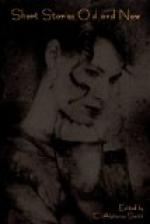Plot. The story was planned rather than plotted. By calling it a carol and dividing it into staves, Dickens would have us think of it not as a narrative but as a song, full of the joy and good will that Christmas ought to diffuse. It is a rill from the fountain of the first great Christmas chant, “On earth peace, good will toward men.” The theme is not so much the duty of service as the joy of service, the happiness that we feel in making others happy; and the four carols mark the four stages in the conversion of Scrooge from solitary selfishness to social good will. The plan is simple but it is suffused with a love and sympathy that no one but Dickens or O. Henry could have given it. If “The Gold-Bug” is a triumph of the analytic intellect, this story is a triumph of the social impulses that make the world better. “It seems to me,” said Thackeray, “a national benefit, and to every man and woman who reads it a personal kindness.” While writing it Dickens said: “I wept and laughed and wept again.” And yet the psychology of the plot is as soundly intellectual as the style is emotional. Dickens knew that a flint-hearted man like Scrooge could not be changed by forces brought to bear from without. The appeal must come from within. He must himself see his past, his present, and his probable future, but in a new light and from a wider angle of vision. The dream is only a means to this end. A man moves to a higher realm of thought and action not by learning new truths but by seeing the old truths differently related.
Characters. Scrooge is, of course, the central character. He is also a perfect example of the changing character as contrasted with the stationary character. In fact all the other characters remain essentially the same, while Scrooge, who at the beginning is unfriendly and friendless, becomes at the end “as good a friend, as good a master, and as good a man as the good old city knew, or any other good old city, town, or borough in the good old world.” It is difficult to create any kind of character, whether stationary or changing, but the latter is the more difficult. Both demand rare powers of observation and interpretation, but the ascending or descending character demands a knowledge of the chemistry of conduct that only the masters have.
The Cratchits must not be overlooked. Tiny Tim’s “God bless us every one” has at least become the symbol of Christmas benevolence wherever Christmas is celebrated in English-speaking lands.]
STAVE ONE
MARLEY’S GHOST
Marley was dead, to begin with. There is no doubt whatever about that. The register of his burial was signed by the clergyman, the clerk, the undertaker, and the chief mourner. Scrooge signed it. And Scrooge’s name was good upon ’Change for anything he chose to put his hand to.
Old Marley was as dead as a door-nail.
Scrooge knew he was dead? Of course he did. How could it be otherwise? Scrooge and he were partners for I don’t know how many years. Scrooge was his sole executor, his sole administrator, his sole assign, his sole residuary legatee, his sole friend, his sole mourner.




